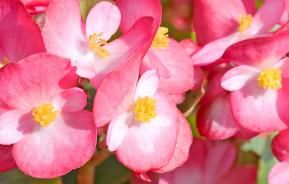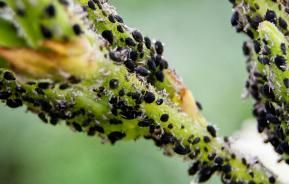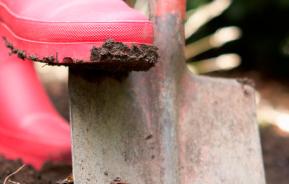These well-behaved plants need very little maintenance, but an annual pruning will help to keep them looking good. Follow our simple guide to pruning hydrangeas to get the best from your plants.
Why prune hydrangeas?
Pruning hydrangeas helps to keep them at a manageable size and gives them a good shape. By stimulating the plant to produce new shoots, pruning also results in a better display of flowers.
However, pruning your plants at the wrong time of year can drastically affect the number of flowers they produce, so it’s important to understand when to prune hydrangeas.
When to prune hydrangeas
The best time to prune most hydrangeas is in late winter or spring, with the exception of climbing hydrangeas, which are pruned in summer after they have finished flowering. Different types of hydrangea require different pruning techniques.
It’s very easy to identify the different types of hydrangea from their flowers, so if you aren’t sure which hydrangea you have, simply wait for it to flower in summer and then prune it the following year, once you know which type it is. Leaving a hydrangea un-pruned for a year will not do it any harm.
Types of hydrangea and how to recognise them

The list below shows the various types of hydrangea you’re most likely to come across in gardens:
- Mophead hydrangeas (Hydrangea macrophylla) are the most familiar form of hydrangea. These popular plants grow into medium-sized shrubs bearing large round flowerheads in summer, made up of masses of small florets. The flowerheads are either pink, blue, or white, and the pink and blue flowers change colour depending on whether they are grown in acidic or alkaline soils. (Acidic soils result in blue flowers, alkaline soils produce pink.)
- Lacecap hydrangeas (also Hydrangea macrophylla) differ from mophead hydrangeas in having flatter flowerheads, made up of an inner centre of tiny flowers surrounded by an outer ring of much larger showier, open ones.
- Paniculate hydrangeas (Hydrangea paniculata) generally form bigger shrubs than the mophead and lacecap types. They produce large, cone-shaped flowers that stay on the plant for a long time, often changing colour as they mature.
- Smooth hydrangeas (Hydrangea arborescens) are medium-sized shrubs producing very large round flowerheads. The best known of these is Hydrangea arborescens ‘Annabelle’, with enormous white flowerheads that bow down the stems of the plants in summer.
- Climbing hydrangeas (Hydrangea anomala ssp. petiolaris) are deciduous climbing plants producing delicate white lacecap-type flowers in summer.
How to prune hydrangeas
Pruning mophead hydrangeas
Mophead hydrangeas flower on buds that have formed during the previous year. They need very light pruning – essentially just deadheading – to avoid cutting off flower buds.
Wait until late spring to prune mophead hydrangeas, as the old flowerheads give the new buds some protection against late frosts.
- Deadhead all old flowerheads, cutting back to the first pair of strong buds below a flowerhead.
- Remove any dead, damaged or crossing stems.
- On older plants, cut back one or two old stems to ground level to encourage the plant to produce new growth.
Pruning lacecap hydrangeas
Like mopheads, lacecap hydrangeas flower on buds that have formed during the previous year, and are pruned in a similar way. Lacecap hydrangeas are hardier than mopheads and can be pruned in autumn or spring.
- Deadhead all old flowerheads, cutting back to the second pair of buds below a flowerhead.
- Remove any dead, damaged or crossing stems.
- On older plants, cut back one or two old stems to ground level to encourage the plant to produce new growth.
Pruning Hydrangea paniculata and Hydrangea arborescens
Both these species produce their flowers on new growth, so prune them in early spring to stimulate the plant to produce new flower-bearing stems.
- Remove any dead wood, plus crossing or damaged branches.
- Reduce last year’s stems by about a third, cutting to just above a pair of strong healthy buds.
Pruning climbing hydrangeas
Climbing hydrangeas can be slow to get going, so there is usually no need to prune them for the first two to three years after planting. Once they do start growing, they can become very vigorous plants, reaching over 10m (32ft) in height, and it’s a good idea to prune them every year to keep them under control.
- Prune as soon as possible after flowering in summer, to avoid the risk of cutting off any new flower buds.
- Shorten any very long, straggling shoots, cutting back to a pair of healthy strong buds lower down. Avoid taking too much off the top of the plant, as this is where most of the flowers will appear.
To reduce the size of an established climbing hydrangea, prune it in spring. Climbing hydrangeas can cope with hard pruning, but are likely to produce fewer flowers for a year or two afterwards. If you are reducing the size of the plant significantly, do so gradually over two or three years to reduce the stress on the plant.
Other types of hydrangea, such as Hydrangea aspera and the oak-leaved hydrangea (Hydrangea quercifolia) need only light pruning in spring to give the plants a good shape, to remove any dead wood and keep to size.
Pruning hydrangeas is very simple to do, and the results are well worth the effort. Follow our step-by-step guide, and your borders will be filled with blooms this summer.








